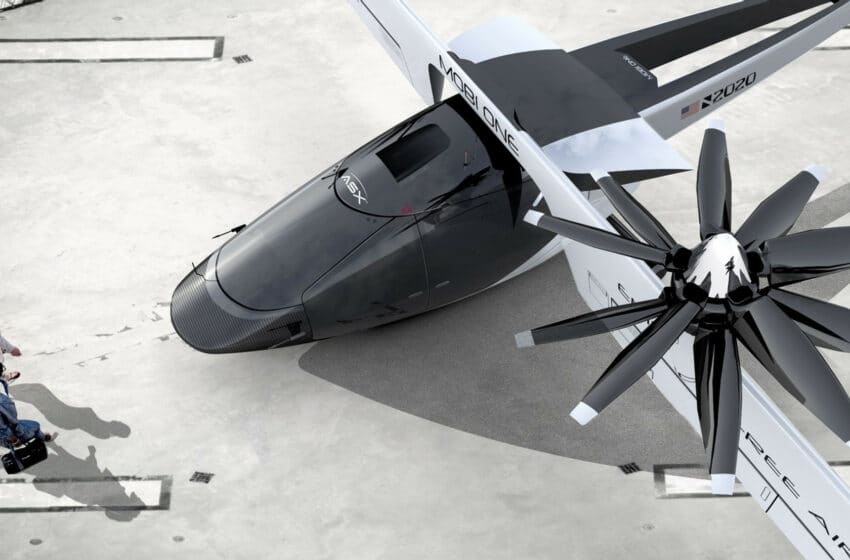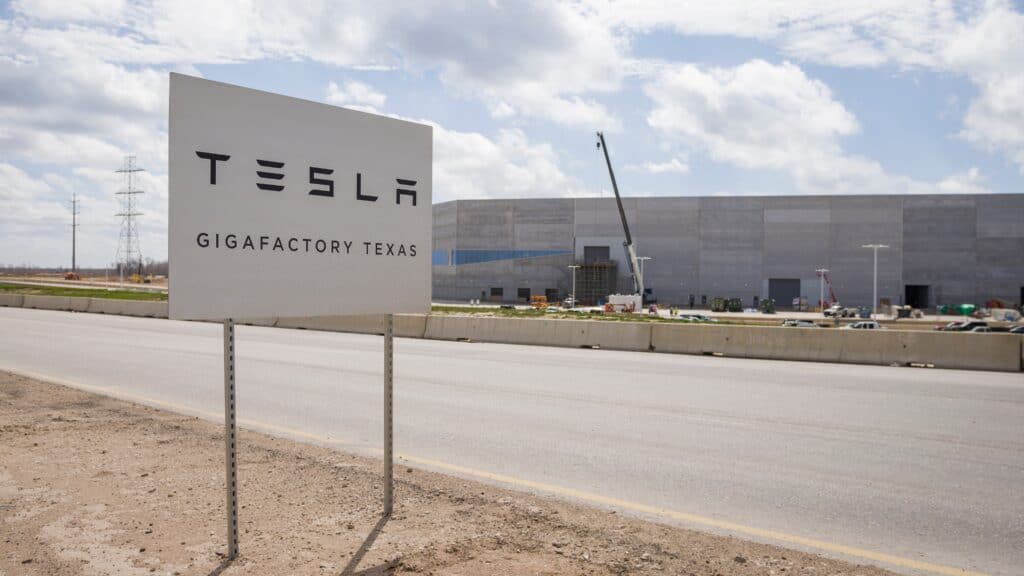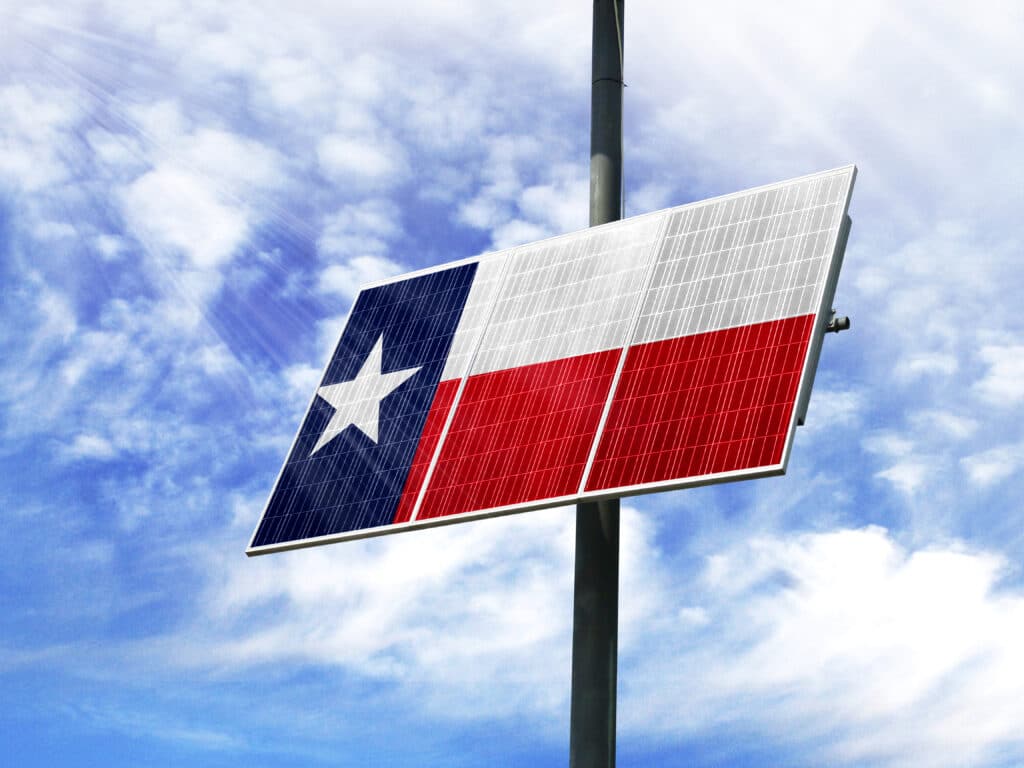Ridesharing in the Sky

Jon Rimanelli, founder and CEO of Airspace Experience Technologies (ASX), believes we’re at the beginning of an air transportation revolution. What will his contribution be? Ridesharing in the sky. ASX is currently prototyping personal mobility aircraft that will carry up to five passengers or 1,100 pounds of cargo between cities, airports, and suburbs—so you may be able to schedule an air trip from your smartphone sooner than you think. Even if you’re not flying yourself, you’ll see the benefits, including reduced road congestion and lowered carbon emissions. We talked to Rimanelli about how he got into aviation, his vision for ASX, and why vertical takeoff and landing is a requirement for urban flight.

Texas CEO: Did you always want to be in aviation? Was this a dream from childhood?
Rimanelli: Like most kids who experienced the Apollo missions and the Mars and lunar rovers, my interest was piqued at a young age. I got into robotics and electronics as a kid, building my own cars and planes. I landed my first contract with Chrysler when I was 14. I built 75 remote-controlled cars for their race teams. In college, I was an apprentice in a robot shop that built animatronics and androids for Disney. After college, I went into the business of manufacturing and selling electronics for automotive, aerospace, and defense.
I did really well in that business and was eventually able to afford an airplane to take me to and from meetings. At that point, I thought, “Man, it’s a shame not everybody can do this!” I’d been in the business of building autonomous systems and electronics for automobiles for a little over a decade by then, and I thought, “We should be building automated airplanes like we do cars. We can democratize air transportation and make personal air mobility affordable to the masses.” That became my big vision.
There’s a huge gap in air mobility in the United States, in that we’ve got 15,000 airports but the mass traveling public is using the top 150. That means you’ve got over 800 million passengers using the top 150 airports in the United States. In other words, the mass traveling public is using 1 percent of the national infrastructure, while the top 1 percent who can own their own plane have access to 99 percent of the infrastructure. I looked at that and thought it was crazy. What we’re missing is an aircraft that can distribute transportation services using the smaller airports.
Back in 2008, I started looking into building small aircraft transportation systems similar to those envisioned by NASA’s Advanced General Aviation Transport Experiments. In 2011, I made the jump and started Detroit Aircraft Corporation. We designed an airplane, a hybrid gas and electric six-seater. I couldn’t get anybody to fund it. They said, “This is crazy. Nobody goes into the business of building airplanes anymore. It’s too risky.” When I received no interest from investors, I decided to go into building drones for the defense industry. I figured I’d get some experience and start small.
I built a handful of quadcopters and started doing demos for Detroit law enforcement. I cold-called Lockheed a two to three times a year for three years straight. They laughed us off the first five or six times, and then, lo and behold, right before Christmas of 2013, they called us up and said, “We’ve got something for you.” We ended up teaming up with Lockheed to assemble the Indago, an unmanned aerial system—commonly known as a drone—that utilized vertical takeoff and landing technology. We marketed and sold them worldwide. It was an incredible product, and the organizations that could afford them loved them. The Indago could fold up into the size of a football, fit in a backpack, and in under a minute, it could fly through the dark of night and find missing persons using its thermal imaging system. Truly the Cadillac of drones.
After just over two years of doing that, we saw the writing on the wall once low-cost Chinese drones started coming on the market. Our sales started to take a hit and we weren’t able to compete. Drone technology was so new to law enforcement and fire departments that spending top dollar on the best technology was not their first choice. While they loved the American-made product, most agencies couldn’t afford it. The next best thing was Chinese product with 80 percent of the capability for less than 5 percent of our price.
Texas CEO: Wow.
Rimanelli: Granted, we had the Cadillac of the market, but we just couldn’t compete with a Chinese product. With sales declining rapidly, I worked with Lockheed to wind down the relationship, and we parted ways amicably. From there, I started to focus on large-scale aircraft. I found an automotive architecture that could do the job of lifting people and cargo, and I came up with some cool designs and pitched them to Uber. They said, “Wow, this is great. Would you like to work together?” I said sure. We’re not an official partner right now, but they have been really supportive, giving us guidance and advice on our vehicle development.
Texas CEO: Do you think the self-driving car problem is even harder to solve than self-flying planes?
Rimanelli: In some ways it is. With self-driving cars, there’s a number of vehicles on the road that are doing level-four automation [where the vehicle can operate autonomously, with the option of operator control; see “The 5 Levels of Vehicle Automation” below]. In aerospace, we’ve been doing level-three automation [where some functions are automated, but operator control is required under certain circumstances] since the 1970s, and we’re now at level four. But it’s considerably easier to achieve level-five automation in the air than it is on the ground, just because there are fewer variables. Will we see certified, level-five-automated aircraft moving people in the next five years? Probably not. I think we’re looking at 2030 for that.

Texas CEO: How much of that is a government certification issue?
Rimanelli: It’s all a government certification issue. Right now, you could fly in a plane autonomously if you had a known route with no obstructions. We could do an autonomous takeoff and get you through the various waypoints autonomously—no problem. That technology exists. The automation is even there for “sense and avoid” sensors that can detect and avoid obstacles in the air and on the ground.
Texas CEO: Tell us about the specific product you’re designing. What’s it going to do for us?
Rimanelli: Our objective is to build a robust, affordable aircraft used for ridesharing. We’re designing simple, safe, autonomous aircraft that will move up to 1,100 pounds of cargo—or five passengers—between cities, suburbs, and airports. We’ll start with some defense and cargo opportunities to validate the equipment. Then, once we’re comfortable and the FAA is comfortable, we’ll start moving people in urban centers.
Right now, 85 percent of all distances traveled on the ground are under 52 miles. These aircraft could reduce congestion immensely, and that’s going to be a global initiative. Congestion and carbon emissions are real problems in urban centers around the world. When you have gridlock traffic, people—and food, and healthcare—just can’t move. Take into consideration the amount of carbon emitted by cars sitting in traffic. In 2019, close to two billion gallons of fuel was wasted in the United States. You’re talking about 20 pounds of carbon for every gallon of gas burned, so that’s 38 billion pounds of carbon released. It’s terrible.
Texas CEO: What do you expect the consumer cost to be? Do you think about it in terms of cost per mile?
Rimanelli: I have a pretty basic model. It’s difficult to cost it by the mile, because most of the energy consumed is at takeoff and landing. I’ve got a standard $75 per seat rate, per 15 minutes of flight time, in a rideshare scenario. In about 15 minutes of flight, we can go a pretty fair distance—45 to 50 miles.
Texas CEO: You’ve mentioned partnering with the auto industry, and you’re based in Detroit. Do you see that as a competitive advantage, being in Detroit and working with people who know how to manufacture?
Rimanelli: I do. In Detroit, our natural resource is our skilled labor. The industrial base there is very mature. We’ve got all the suppliers for electrification, automation, structures. We know how to produce things at scale. That’s a real competitive advantage for us.
Texas CEO: You’re doing vertical takeoff and landing. What’s the benefit of that?
Rimanelli: The main benefit is that V/STOL, or vertical/short takeoff and landing, allows us to get in and out of an urban center without the real estate. In urban centers right now, you’ve got no room for additional roadways or buildings—and definitely no space for runways. You’ve got to go vertical.

Texas CEO: What phase of development are you in today?
Rimanelli: We’ve got a handful of prototypes that we’ve built. We’ve built fifth-scale and third-scale prototypes, and we’re now working on a full-scale machine. We’re pretty fired up about it. My goal is 2,500 aircraft by 2025, generating about $1 million in revenue per vehicle. We’re not selling aircraft to the general aviation consumer or selling fractional shares to owner-operators. We are strictly an air taxi developer; this is a commercial transport system. All you need at a facility to be up and running is charging, since these vehicles operate entirely on electric propulsion.
Texas CEO: Do you need advancements in battery technology to make it practical?
Rimanelli: If we’re carrying 1,100 pounds, the current battery technology gets us about 55 miles. There should be batteries with about twice that energy density going on sale soon; that will get us 100 miles. There’s going to be incremental improvements in range. The lighter we can make the machine, the denser we can make the battery, and the more power we can pack into the motor, the further we’ll go.
It’s just a matter of time before the battery technology becomes viable to go 300 miles. We’re at the very beginning of a revolution in transportation—an electric mobility revolution. I expect that within the next 10 to 15 years, we’re going to see a dramatic change in the way people and products are moved within cities and between cities. You’ll see a much more distributed transportation system.
My vision is an equilibrium between air and ground mobility. Traffic is an inconvenience that wastes billions in fuel and productivity. The automobile yielded trillions of dollars in economic performance in the United States over the last 100 years, and electric and V/STOL will add a similar level of economic performance over the next 100 years. Morgan Stanley is predicting a $1.5 trillion industry worldwide by 2040. We’re just at the beginning.






The Missing Link
February 23, 2023